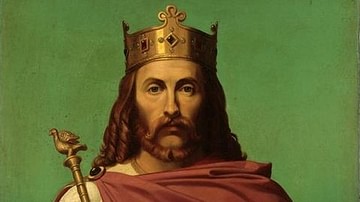Search
Search Results

Definition
Furies
The Furies (or Erinyes, sing. Erinys) were creatures from Greek mythology who exacted divine retribution from those guilty of wrong-doing. Crimes which were especially likely to incur their wrath were those involving one's family and anything...

Definition
Gideon
Gideon was a judge and military leader, whose story was recounted in the Biblical Book of Judges. “Judge” (Hebrew, shofet) in this book was not a circuit, court judge, but someone raised up by the God of Israel during a crisis. It is equivalent...

Definition
Walpurgis Night
Walpurgis Night (30 April, annually) is a modern-day European and Scandinavian festival derived from the merging of the ancient pagan celebration of Beltane with the commemoration of the canonization of the Christian Saint Walpurga (l. c...

Definition
William II of England
William II of England, sometimes called William 'Rufus' for his red hair and complexion, reigned as the king of England from 1087 to 1100 CE. The son of William the Conqueror (r. 1066-1087 CE), the younger William was loyal to his father...

Definition
Orleans Cathedral
The Cathedral of the Holy Cross (Sainte-Croix) of Orleans in the Centre-Val de Loire region of France, was first built in the 13th century CE on the site of a series of older churches dating back to the 4th century CE. The cathedral, which...

Definition
Chilperic I
Chilperic I (r. 561-584) was a king of the Merovingian Dynasty, who ruled over the Frankish kingdom of Neustria. During his reign, Chilperic was often occupied with civil wars against his brothers and intrigues by his own sons, conflicts...

Definition
Kachina Cult
The Kachina (also “Katsina”) cult refers to the specific religious practices centered on the kachina, which is a spiritual entity and divine messenger of the Puebloan peoples as well as the Hopi, Zuni, Tewa, and Keresan tribes in what is...

Article
Medieval Cures for the Black Death
The Black Death is the 19th-century CE term for the plague epidemic that ravaged Europe between 1347-1352 CE, killing an estimated 30 million people there and many more worldwide as it reached pandemic proportions. The name comes from the...

Article
Religious Responses to the Black Death
The Black Death of 1347-1352 CE is the most infamous plague outbreak of the medieval world, unprecedented and unequaled until the 1918-1919 CE flu pandemic in the modern age. The cause of the plague was unknown and, in accordance with the...

Article
The Mayan Pantheon: The Many Gods of the Maya
The pantheon of the Maya is a vast collection of deities worshipped throughout the regions of Yucatan, Quintana Roo, Campeche, Tabasco, and Chiapas in Mexico and southward through Guatemala, Belize, El Salvador and Honduras. These gods informed...